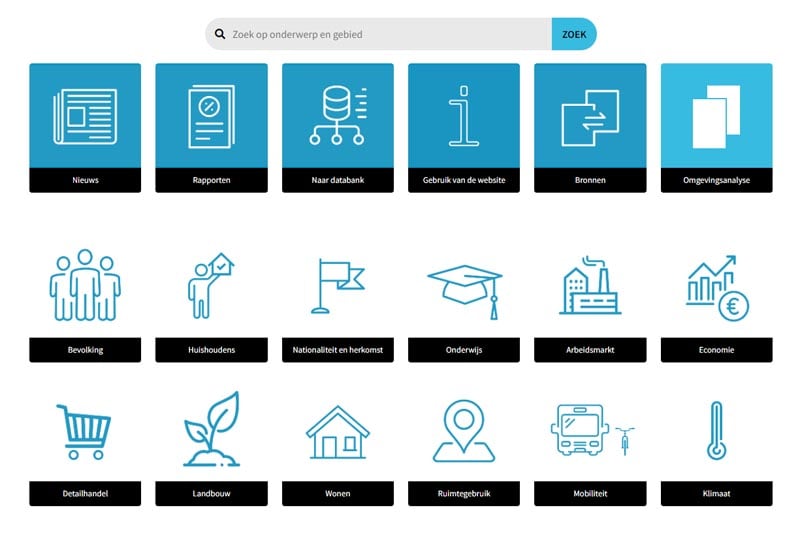Innovative StoryMaps for Local Policy Making
In an ever-changing society, it is crucial that policymakers and organizations have the right information to develop effective strategies. A valuable tool that fulfils this need is the poverty atlas. This atlas was developed by the Data & Analysis Centre of the Province of West Flanders. The core of the centre’s mission is to improve the quality of policy planning through both quantitative and qualitative analyses.
Click on the image to discover the 2023 edition of the Poverty Atlas.
What does the Data & Analysis Centre do?
- Figures and Maps: We provide and analyse extensive datasets and maps in order to map the external environment in which boards and organisations work. These visual representations of data help in understanding the complex context in which decisions are made.
- Own Registration Data: We process and analyse the registration data of organisations and services. This provides insights that are specific to the customer, allowing them to make aligned policy decisions.
- Methodological Know-how: We share our expertise in interpreting figures, designing and conducting research, and drafting policy planning. Our goal is to provide clients with the tools and knowledge they need to make effective decisions.
- Research supervision: We offer guidance in the development and implementation of research methodologies, both based on our own expertise and at the request of clients.
The clients of the Data & Analysis Support Centre
- Local Governments: We support municipalities in gaining insights specific to their region, which helps them develop effective local policy planning.
- Supra-Local Organizations: We provide valuable data and analytics for organizations operating at the regional or provincial level.
- Colleagues from Provincial Services: Our colleagues within provincial services can count on our expertise and support to interpret and use data for their policy purposes.
Cooperation between provinces
In each Flemish province there is a Data & Analysis Support Centre, each with its own operation and vision. But there is a very strong interprovincial cooperation in the field of data and so the web application Provinces in numbers was born (https://provincies.incijfers.be/). It is a tool to unlock data on a wide variety of themes in a user-friendly way. On the website of provinces in figures you can find and look up a very wide range of recent data. The idea is that the website can be an instrument in the context of policy planning.
A lot of data is available at a fine-grained level (statistical sector level). This level is also used by the Data & Analysis Support Centre in the poverty atlas. This atlas aims to provide an answer to the question of which neighbourhoods in the province of West Flanders are disadvantaged and what the characteristics of these neighbourhoods are, but also to the question of how these neighbourhoods evolve over time.
The Poverty Atlas aims to map spatial concentrations of potentially vulnerable families, in order to be able to take targeted measures. The atlas is updated regularly, ensuring that the data is always up-to-date and policymakers have the information they need to make informed decisions.
The atlas with the provincial results is primarily a scientific study. But the atlas should also be a working tool to be able to work with it locally. Over the past 10 years, the atlas has proved to be an important guide for many local authorities in determining and implementing a local poverty policy.
That is why municipal analyses are also available. To this end, the latest edition shifted to StoryMaps, a very user-friendly way to display map material. It is a dynamic and efficient tool to display the results of the poverty atlas. In the past, the municipal analyses were made manually, but StoryMaps now saves a lot of time and offers more possibilities to work on a customized basis.
The Poverty Atlas is a powerful tool that not only improves the quality of policy planning, but also opens the way to more inclusive and effective decision-making.




